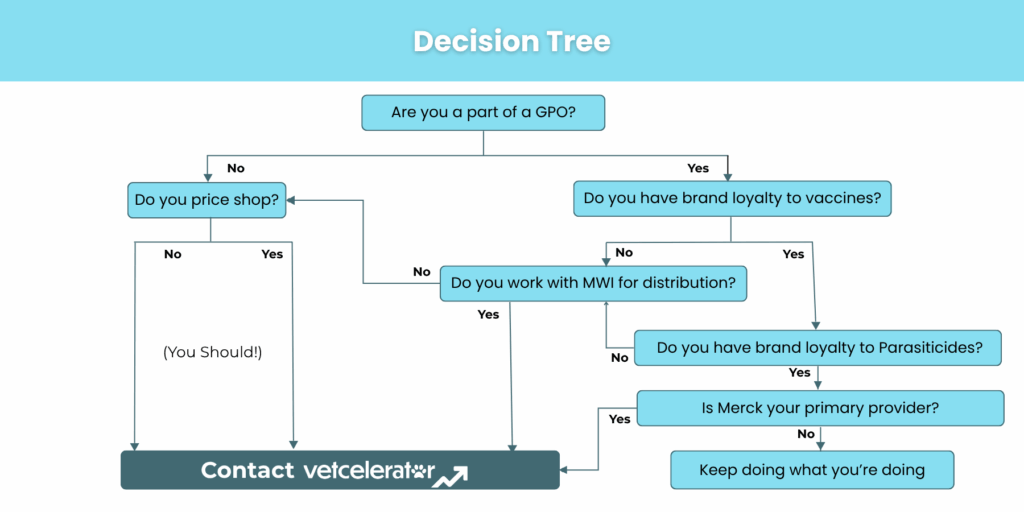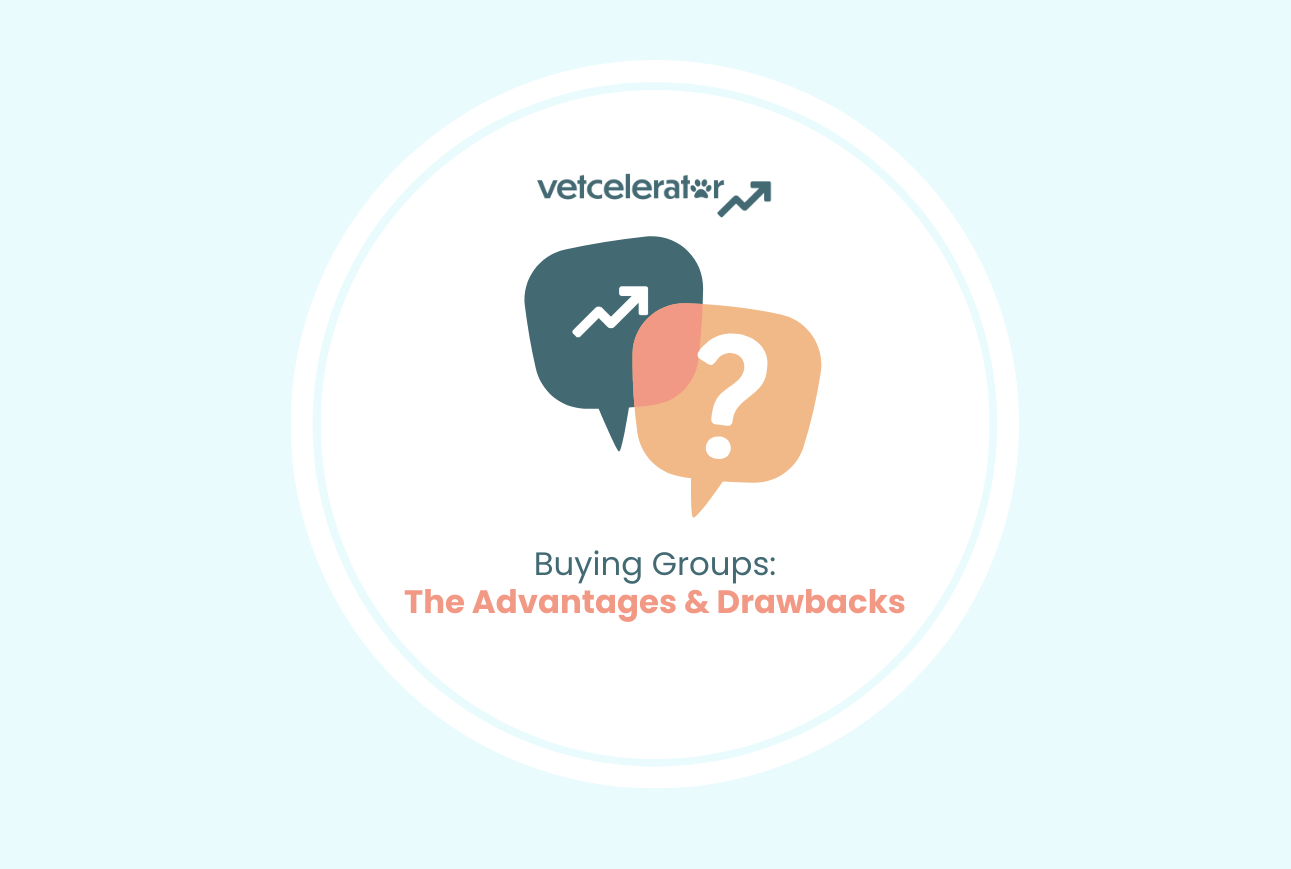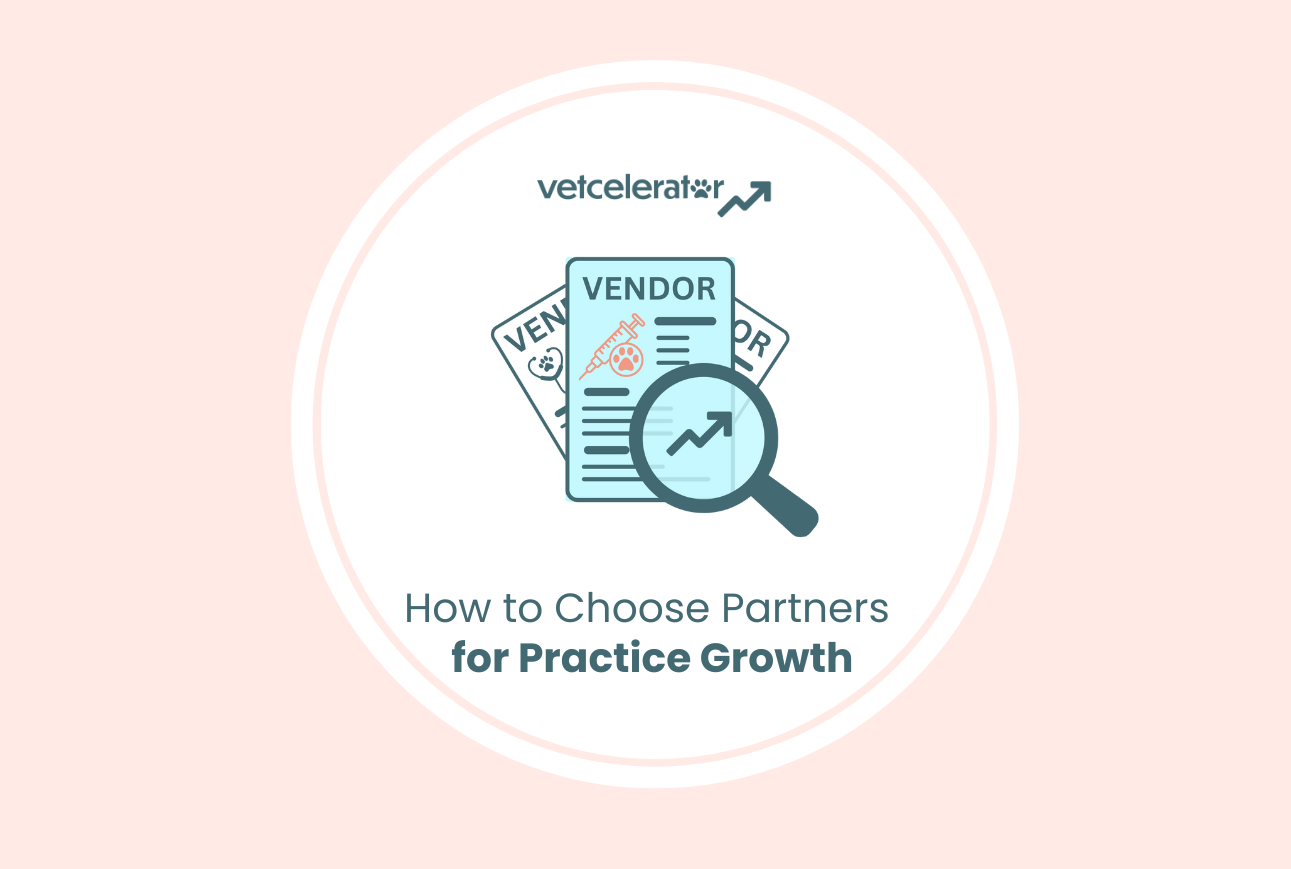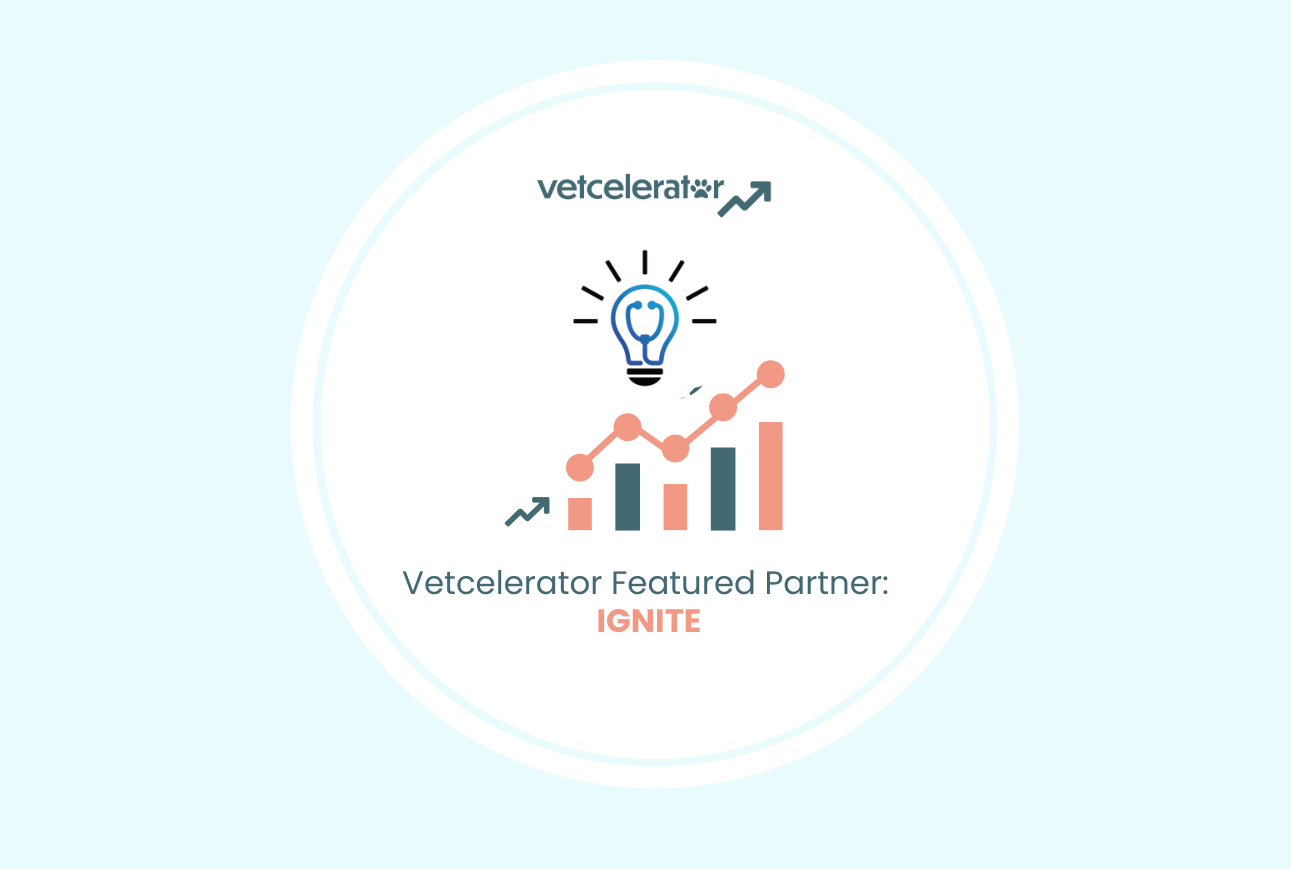
On the profit and loss statement (P&L), there are two main drivers of profitability for a veterinary practice: Cost of Goods Sold and Labor. These two categories make up the vast majority of your expenses. This series from Vetcelerator will feature how to think about the challenges of managing the cost of goods sold (COGS) at your veterinary clinic.
The table of contents for what’s to come is as follows:
The Value of a Buying Group For Vet Clinics
In a black-and-white world, you can gain more value in one of two ways:
- You either make the overall pie bigger and take a slice of the now bigger pie or
- You take from someone else’s slice.
This black-and-white world is overly simplified and framed as mutually exclusive paths. As a starting point for the conversation on veterinary Group Purchase Organizations, their business model, and their impact on a healthy pet care practice, we should ask the question: How does the GPO add value?
What is a Veterinary Group Purchase Organization?
Simply put, a Group Purchase Organization, also known as a buying group, aims to help small businesses (like independent veterinary clinics) reduce costs and streamline their procurement processes by leveraging collective purchasing power. Members of a GPO can access pre-negotiated contracts with suppliers, saving money and time on procurement. Ideally, this also reduces the risk of small businesses that don’t have a strong vendor due diligence process. GPOs are used in many industries, including healthcare, food service, construction, and manufacturing. This is the simple explanation, but let’s use a framework to better understand the business model. In each category, we can provide a question that members should ask of their GPO.

Customer
Think of “customer” as the customer preferences that they will be willing to pay for. In other words, what value is created for the customer? In GPOs, this usually is creating a platform where customers can access better pricing on the things they commonly buy. There may be additional features and dimensions from there, such as:
- Easier Ordering for Reduced Admin Time
- Confirmation of the Best Price
- Inventory Management Support
- Education on Products
- New Products
Each GPO has a slightly different feature set, but all try to solve the main customer problem of price discovery and best price realization.

Question for Members: What are my expectations of savings based on what you (the GPO) know about me? How does your offering differ from what competitors offer?
Revenue Model
The revenue model extracts value from the value created for the customer. There are two common ways that GPOs make money. Veterinary buying groups can get money:
- Directly from members in the form of a membership fee, or
- Indirectly from members through rebate/revenue share income with the vendors members purchase from.
The former is typically straightforward, with monthly or one-time fees to be a member. The latter is difficult to calculate afterward and impossible to calculate before as they would need to understand their purchase volumes, the rebate rate, and the GPO take rate (what portion of the rebate is taken from the GPO). We will discuss more on the disadvantages of this revenue model (to the member) later.

Question for Members: What are the fees for maintaining a GPO membership? Does the GPO have other revenue sources (vendor fees, etc.)?
Resources
Resources sets up the network, people, processes, and technology needed to build the product. For a GPO, this could include the vendor negotiation team, the contracts they negotiate, and the systems for implementing these savings. This section is relevant in terms of differentiation. Are there people, processes, or technology that differentiate how the product functions that ultimately influence a customer’s preference?
Ex. There is a process that allows GPO members to better align with brand partners, which allows vendor management to perform better and secure better prices for the network as a whole. This would be a differentiation strategy that ties back to customer value (best price).

Question for Members: What is the vendor selection process, and how does it support the lowest price?
Delivery Model
Separate resources, which builds the product, the delivery model distributes it to members. A good delivery model will utilize resources well and position those resources to the customer for a high level of engagement, which ultimately increases the value created from the customer’s perspective. Think about credit card companies that have black-out dates for point redemption. This is an example of a delivery model failing to match the resource and customer preferences to ultimately be utilized.
Ex. This could mean restrictions on use, but it also could mean ease of accessing discounts or a reporting feature that shows members how much they save and how they can do better (going back to preferences of best price or ease of use).

Question for Members: How do I know the GPO is working for me (many don’t actually track elements to check)? What are the ways I should measure the performance of the product?
Advantages of Joining a Group Purchasing Organization (GPO) for Veterinary Practices
For independent vet practices, especially small to mid-sized clinics without a dedicated procurement team, a reputable veterinary GPO can offer significant advantages.

Access to Volume Discounts
GPOs leverage the combined buying power of their members, giving smaller veterinary practices access to pricing typically reserved for larger corporate groups. Whether it’s medical-grade gloves, vaccines, or surgical instruments, practices benefit from discounts they wouldn’t be able to secure on their own

Shared Buying Power
Veterinary clinics may struggle to meet vendor minimums for certain products or brands. By pooling orders across multiple clinics, a veterinary GPO makes it easier for members to qualify for bulk pricing without having to over-purchase or tie up capital in excess inventory. However, it’s important to note that some GPO contracts may require members to meet certain purchasing thresholds, which can become a challenge if some staff continue to buy from outside vendors.

Streamlined Supply Sourcing
GPOs work with pre-vetted vendors and often offer a curated catalog of trusted brands and products commonly used in veterinary care. Ideally, this saves time for veterinary practice managers (or whoever does the ordering), as well as lowers the risk of hiring a non-reputable vendor. To be sure, practices should know the GPO’s vendor selection criteria so they can have confidence in the safety and security of their offerings.
Potential Drawbacks of a GPO for Veterinary Practices
While there are many benefits, GPOs aren’t without limitations. Veterinary professionals should evaluate the following considerations before committing to vet buying group membership.

Limited On-Contract Product Availability
Because GPOs aim to serve a wide network, they may not always have specific products your vet clinic prefers or needs, especially if you use niche or specialty items. In these cases, your practice might need to either compromise with an alternative brand or purchase the item off-contract, forfeiting any GPO pricing advantage.

Reduced Flexibility in Sourcing
Joining a veterinary GPO can sometimes restrict your ability to shop the open market for the best deal. If a GPO’s pricing isn’t competitive on a particular product or they don’t carry a product at all, sticking strictly to contract agreements could mean missing out on better pricing elsewhere. This trade-off between consistency and flexibility is important to weigh.

Transparency Concerns
Not all GPOs operate with full transparency about how they earn revenue or structure vendor relationships. Before partnering with any GPO, ask about how they’re compensated (e.g., through admin fees or vendor rebates), whether they disclose conflicts of interest, and how they select their contract partners. A lack of clarity here could lead to misaligned priorities or less favorable terms for your practice.
Making the Pie Bigger or Taking a Slice?
Ultimately, the question for a practice needs to be, will joining a GPO increase the value of their practice, and if so, how?

Vetcelerator believes that GPOs like ours are incredibly important to an independent practice, but how the value creation occurs is important because making the pie bigger and taking a slice aren’t mutually exclusive. In addition, taking a slice isn’t necessarily bad; there are going to be trade-offs in a zero-sum game. Here is what we mean:
- Taking a Slice: We’ve written previously on the topic of Marketing to Vendors, but a simpler way to say this is one word: alignment. By aligning spending with vendor contracts and controlling off-contract spend, a veterinary clinic increases their value (at the expense of full-priced goods). In addition, the vendor does as well (at the expense of another vendor).
- Making the Pie Bigger: GPOs can make the pie bigger by reducing administrative time and risk in vendor selection, ordering time, and price transparency. This additional time saved can be used to do other value-creating things for a practice.
Conclusion
Because the operating model of veterinary GPOs differ, there will not be a best GPO overall, but there will be a best GPO for your specific practice. Vetcelerator can perform a complimentary analysis to determine if you are a good fit for our veterinary GPO and give you an update on how your clinic is performing. Get in contact with our team to schedule!




